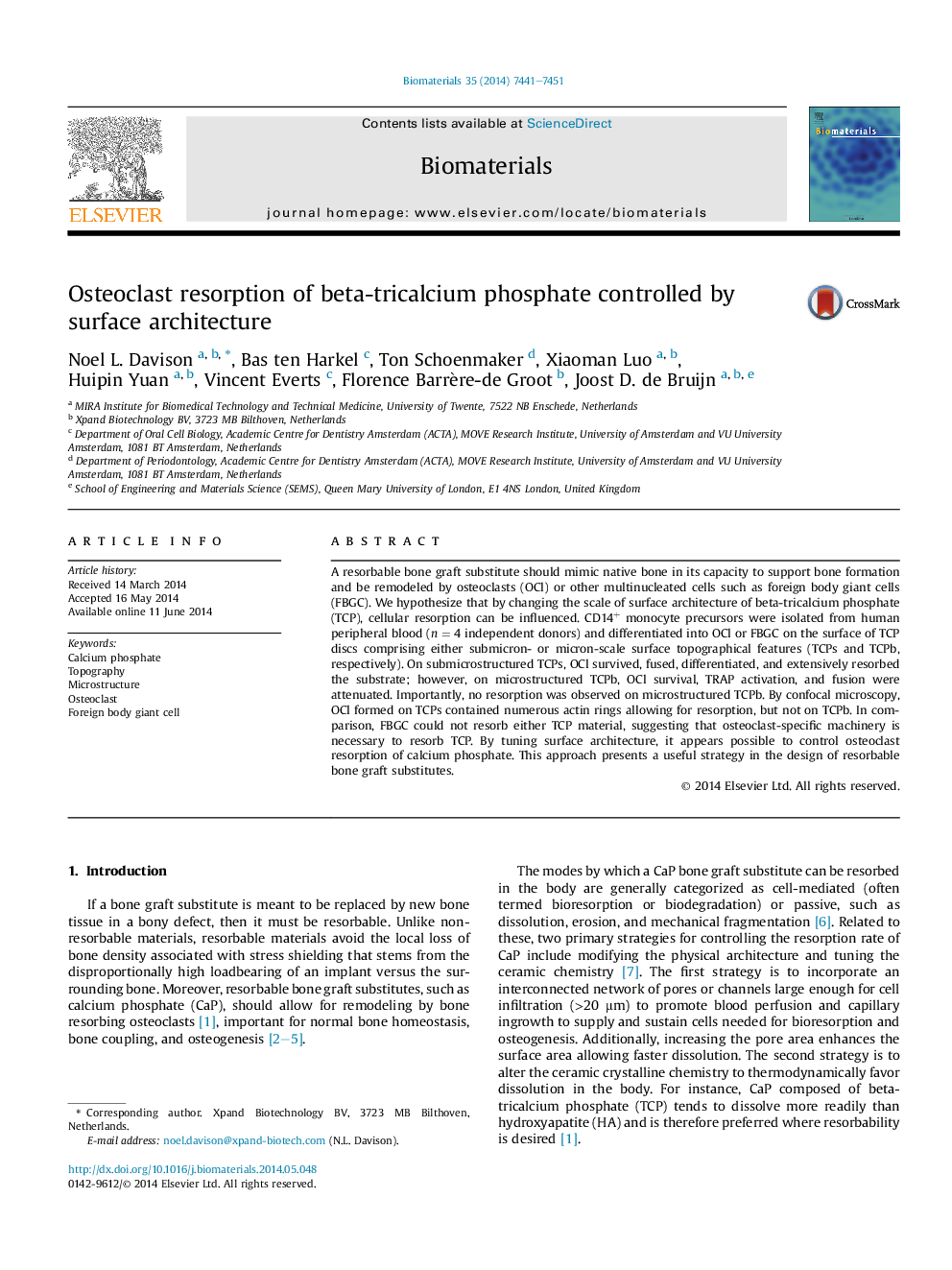| Article ID | Journal | Published Year | Pages | File Type |
|---|---|---|---|---|
| 10227222 | Biomaterials | 2014 | 11 Pages |
Abstract
A resorbable bone graft substitute should mimic native bone in its capacity to support bone formation and be remodeled by osteoclasts (OCl) or other multinucleated cells such as foreign body giant cells (FBGC). We hypothesize that by changing the scale of surface architecture of beta-tricalcium phosphate (TCP), cellular resorption can be influenced. CD14+ monocyte precursors were isolated from human peripheral blood (n = 4 independent donors) and differentiated into OCl or FBGC on the surface of TCP discs comprising either submicron- or micron-scale surface topographical features (TCPs and TCPb, respectively). On submicrostructured TCPs, OCl survived, fused, differentiated, and extensively resorbed the substrate; however, on microstructured TCPb, OCl survival, TRAP activation, and fusion were attenuated. Importantly, no resorption was observed on microstructured TCPb. By confocal microscopy, OCl formed on TCPs contained numerous actin rings allowing for resorption, but not on TCPb. In comparison, FBGC could not resorb either TCP material, suggesting that osteoclast-specific machinery is necessary to resorb TCP. By tuning surface architecture, it appears possible to control osteoclast resorption of calcium phosphate. This approach presents a useful strategy in the design of resorbable bone graft substitutes.
Related Topics
Physical Sciences and Engineering
Chemical Engineering
Bioengineering
Authors
Noel L. Davison, Bas ten Harkel, Ton Schoenmaker, Xiaoman Luo, Huipin Yuan, Vincent Everts, Florence Barrère-de Groot, Joost D. de Bruijn,
